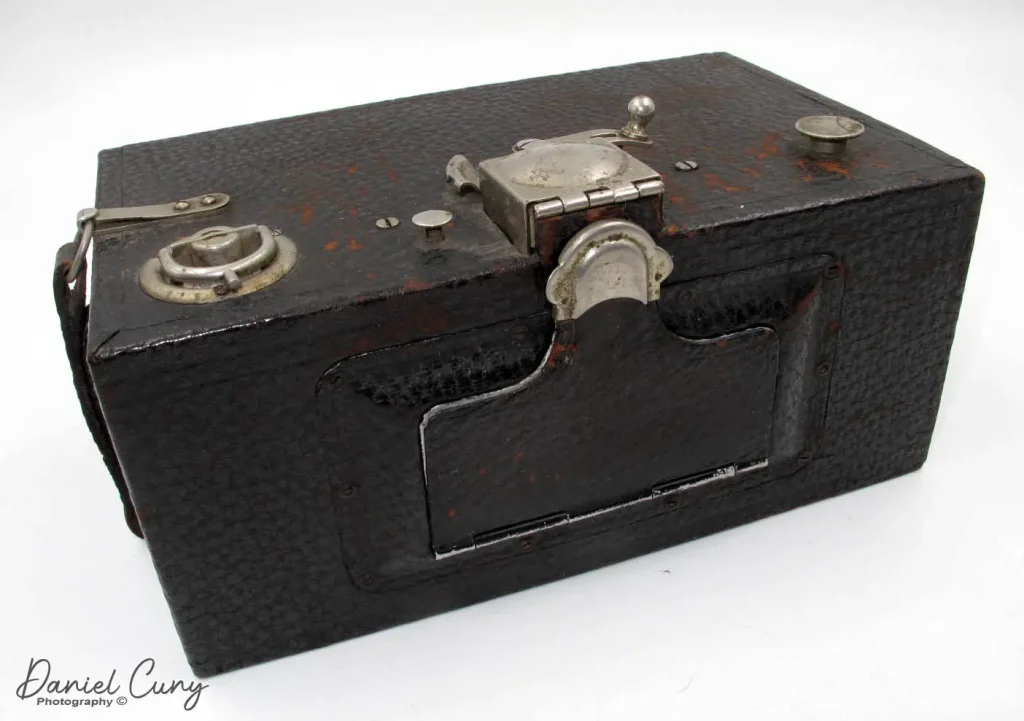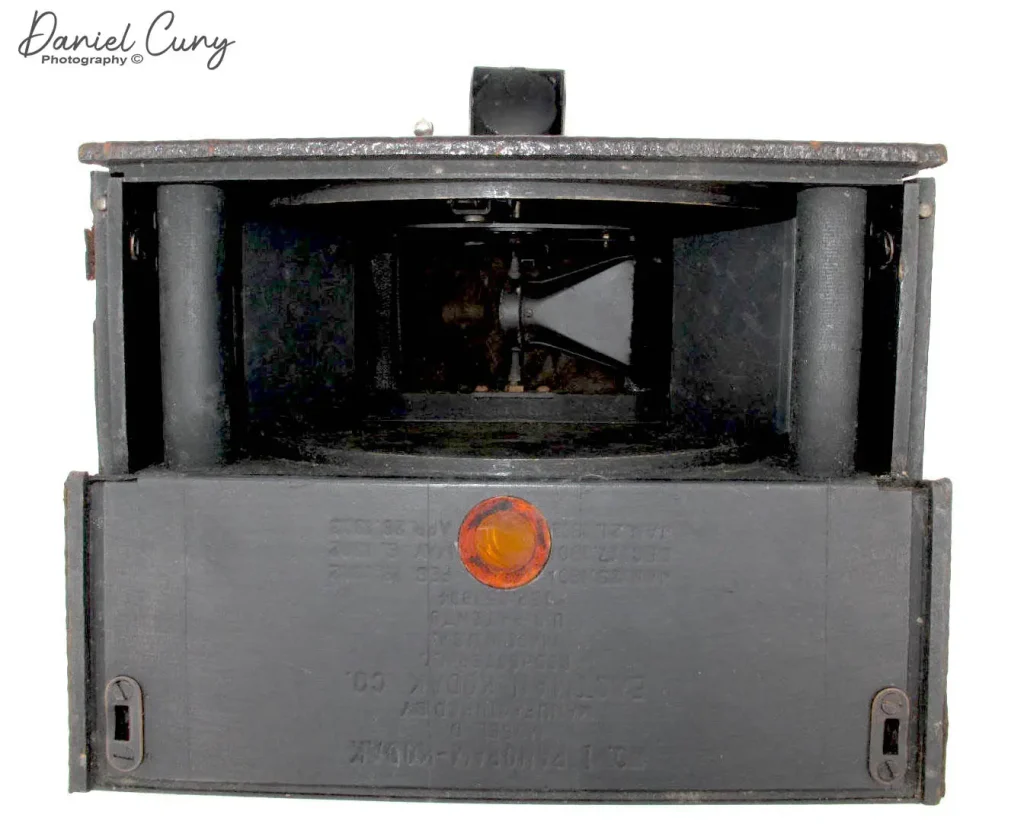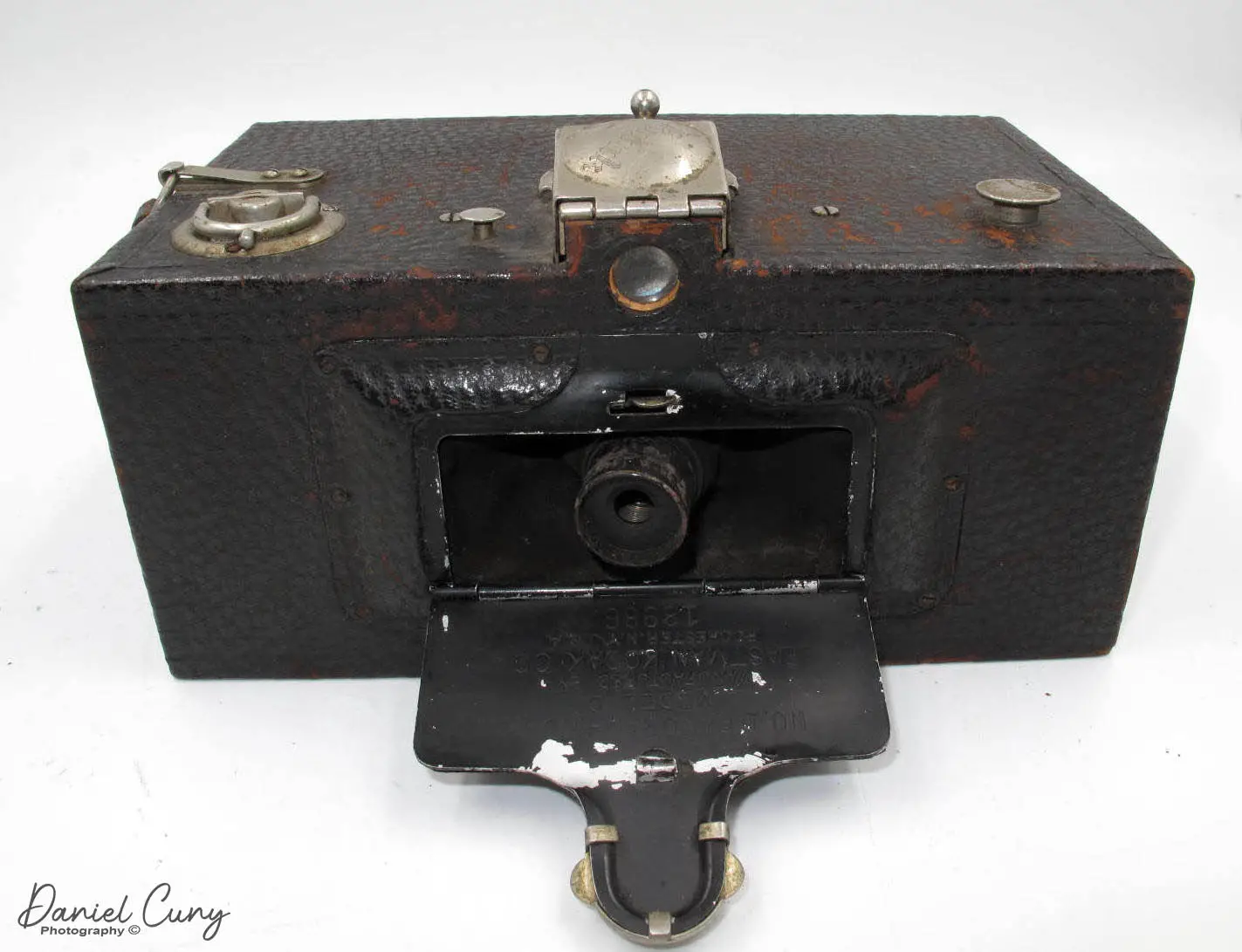My love for cameras and photography goes back to when I was a young boy living in Chicago. I believe the majority of the people I know with this kind of passion always starts at a young age. The fascination began when my uncle would photograph the family and would line us up for the obligatory holiday photos. It was Easter, Christmas, or just a casual Sunday family dinner with aunts, uncles, and cousins, watching the unbelievable bright flash of the flashbulb (yes flashbulbs), blinking my eyes, and seeing the bright dot for what seemed like minutes. That just drew me in.
Fast forward 40 years, where my fascination turned into a profession, and my collection of cameras grew from a couple to the hundreds. I’ve always loved panoramic photos as they showed me the expansive view that I see through my own eyes. Being a full-fledged collector, my friends and I bought about 40 panoramic negatives taken just after the 1906 earthquake in San Francisco, which you can view here. Upon researching the photos, I found the size of the negatives resembled the size taken with a Kodak Panoram No.1.

The Kodak Panoram No.1, manufactured between 1900-1926, so the time frame fits when the photos were shot, and the camera used 105 size film that produces a 2 1/4″ x 7″ negative. The significant part of this camera is that 105 film is the same size as 120 film. The camera has a sweeping lens, and the back has a curved film plane, so when the lens swings after you press the shutter button, the lens swings on the axis of the film plane, exposing the film.
There is a handle on the top which regulates the movement of the lens and two notches you can put the handle into to set the shutter speed for either fast or slow lens movement. You can expose the film with the lens moving left to right or right to left, so there is no difference. This action on the camera was something I need to get used to when exposing photos.
On top of the camera is a bubble level along with two lines displaying the angle of view, which is 112 degrees. The camera has a waist-level finder to view the subject, which is extremely small and hard to use. There is no viewfinder to look through, so the angle guides on the top of the camera are helpful. This is especially helpful when you’re looking through the waist-level finder and looking at your subject.

I had one of these in my collection and thought it might be fun to take it off the shelf, clean the lens, and give it a whirl. My wife and I planned a trip to Yosemite on a short holiday. I thought this would be the ideal time to put a few rolls of film through the camera and see the results. I felt for the first roll of film since I wasn’t too sure about the shutter speed, I’d shoot film with more exposure latitude. I loaded up with Kodacolor II, 100 ISO.
Loading the film was a bit more complicated than you think, given the extra-long film plane you need to load the film across. On the back of my camera is a piece of paper with the numbers 2,6,10,14 taped to it. Once loaded, I wound the film to the first exposure. Looking through the red window, I turned the advance to exposure number 2, guessing that the paper taped to the back is correct.
We had driven to Yosemite Valley, checked into the lodge, and were going to walk through the valley. Time for my first exposure with the Kodak Panoram No.1. I was setting up the camera, and different thoughts were running through my head. Keep it level, wind the camera, look through the waist-level finder, look at the angle of view on the top, set the shutter, and press the shutter button. Watching the lens swing as it was making the first exposure brought a massive smile to my face. Shooting with this camera was fun!!!.



I even tried the odd and unusual vertical subject shot, which was fun, but the results weren’t the best. We walked and drove around Yosemite for the next couple of days, where I took the Kodak Panoram No.1 out to record different subjects. Shooting with this camera was much more fun to shoot with than I anticipated. The photos are pretty clear for a 120-year-old camera. I’d encourage anyone to go try out some older cameras for themselves!
You can see my website here. Follow me on Instagram here.
Share this post:









Comments
D Evan Bedford on Kodak Panoram No.1 – Photographing Yosemite with my 120 year old Panoramic Camera – By Dan Cuny
Comment posted: 15/08/2020
But all politics aside, thanks for this. Your photos turned out really well.
Comment posted: 15/08/2020
Graham Spinks on Kodak Panoram No.1 – Photographing Yosemite with my 120 year old Panoramic Camera – By Dan Cuny
Comment posted: 15/08/2020
Comment posted: 15/08/2020
Comment posted: 15/08/2020
Peter on Kodak Panoram No.1 – Photographing Yosemite with my 120 year old Panoramic Camera – By Dan Cuny
Comment posted: 15/08/2020
Trevor on Kodak Panoram No.1 – Photographing Yosemite with my 120 year old Panoramic Camera – By Dan Cuny
Comment posted: 15/08/2020
Comment posted: 15/08/2020
Michael J on Kodak Panoram No.1 – Photographing Yosemite with my 120 year old Panoramic Camera – By Dan Cuny
Comment posted: 16/08/2020
We used to have huge panorama cameras for school photos and I should do some research- what are they and can I get one cheap or free? There's a great game of running from one end to the other to appear twice, or turn identical twins into quads, and so on.
Comment posted: 16/08/2020
Comment posted: 16/08/2020
Leo Tam on Kodak Panoram No.1 – Photographing Yosemite with my 120 year old Panoramic Camera – By Dan Cuny
Comment posted: 16/08/2020
Comment posted: 16/08/2020
BG on Kodak Panoram No.1 – Photographing Yosemite with my 120 year old Panoramic Camera – By Dan Cuny
Comment posted: 17/08/2020
Comment posted: 17/08/2020
Kate Johnson on Kodak Panoram No.1 – Photographing Yosemite with my 120 year old Panoramic Camera – By Dan Cuny
Comment posted: 18/08/2020
Michael on Kodak Panoram No.1 – Photographing Yosemite with my 120 year old Panoramic Camera – By Dan Cuny
Comment posted: 19/08/2020
Comment posted: 19/08/2020
Xiong Chiamiov on Kodak Panoram No.1 – Photographing Yosemite with my 120 year old Panoramic Camera – By Dan Cuny
Comment posted: 02/09/2020
Comment posted: 02/09/2020
Clark Hecker on Kodak Panoram No.1 – Photographing Yosemite with my 120 year old Panoramic Camera – By Dan Cuny
Comment posted: 14/05/2021
Judging by the strong blue haze in the photos, I suspect the lens is UV-capable, perhaps substantially so. With the proper filter (e.g. Hoya U340 or similar) and negative film, you could likely take ultraviolet pictures with this camera. For visible photography, it would behoove you to use at least a skylight filter, especially with color, for which the camera was not designed. Either way, it would be useful to find a way to mount filters.